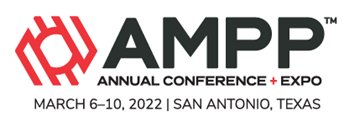Search
Products tagged with 'hardness'
View as
Sort by
Display
per page
Friction Reduction Coatings For Carbonate Scale Mitigation: A Comparison Of Materials Technologies
Product Number:
51321-16533-SG
Publication Date:
2021
$20.00
Is 22 HRC the right threshold for TMCP large diameter pipes in severe sour environment?
Product Number:
51323-18943-SG
Publication Date:
2023
$20.00
Local Hard Zones On TMCP Large Diameter Line Pipes: What Do We Know?
Product Number:
51322-17565-SG
Publication Date:
2022
$20.00
Long-Term Aging Behavior Of Cold-Worked Alloy 690 In Simulated PWR Primary Water
Product Number:
ED22-18358-SG
Publication Date:
2022
$20.00
OLAC (On-Line Accelerated Cooling)-based X65 Linepipe with low surface hardness for Severe Sour Environment
Product Number:
51321-16387-SG
Publication Date:
2021
$20.00
Optimized Hardness Measurements for Micrometric Coatings in Disc Brake Components
Product Number:
51324-20993-SG
Publication Date:
2024
$40.00
RP0472-HD2000-SG-Methods and Controls to Prevent In-Service Environmental Cracking of Carbon Steel Weldments in Corrosive Petroleum Refining Environments-HD2000
Product Number:
21006-HD2000
ISBN:
1-57590-114-5
Publication Date:
2000
$179.00
Should Socket Welds Be Used In Sour Service Process Environments And What Are The Quality Control Requirements?
Product Number:
51321-16536-SG
Publication Date:
2021
$20.00
SP0472-2010-(Spanish), "Métodos y controles para prevenir el agrietamiento ambiental en servicio de uniones soldadas de acero al carbono en ambientes corrosivos de refinación de petróleo"
Product Number:
21177-SG
ISBN:
1-57590-115-3
Publication Date:
2010
$179.00











